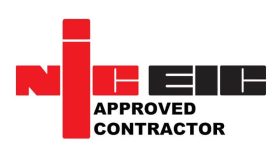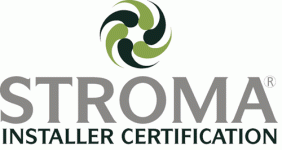PITCHED ROOFINSULATION
- Free to find out
- 1-minute form fill
- No obligation / No catch
- Free Insulation / Free Heating Upgrades / Free Smart Controls
- We do all the hard work for you: applying on your behalf and installing
Under the official Government backed ECO4 scheme, you can get FREE home energy improvements!
Understanding the Importance of Roof Insulation
Because warm air rises, roofs are one of the biggest sources of heat loss within UK homes. According to experts, roofs can account for anywhere between 25% and 40% of heat loss in the average home.
This is why a well-insulated roof is key to creating an energy-efficient property all year round. Quality insulation not only retains heat during the winter but also keeps homes cooler in the summer, providing comfort and energy savings throughout the year.

Types of Roofs and Insulation
UK houses typically come with one of two types of roofs:
- Pitched Roofs: These require either warm or cold insulation.
- Flat Roofs: These require warm deck, cold deck, or inverted roof insulation.
Regardless of whether your house has a flat or pitched roof, quality insulation is a sure-fire way to improve the energy efficiency of your property.

Why Do I Need Pitched Roof Insulation?
Roofs are exposed to extreme weather, from heavy rain and strong winds to unrelenting sun in the summer. Uninsulated homes let in significant amounts of cold and hot air, affecting the indoor temperature. Insulating your pitched roof will dramatically improve your home’s temperature balance and energy efficiency.
Many people only associate home insulation with keeping their indoors warm and cosy, but it also plays a crucial role in keeping the heat out. With the UK’s climate warming and heat waves becoming more common, home insulation has never been more vital or more value for money.
In essence, insulating a pitched roof creates a thermal boundary that helps maintain a comfortable indoor temperature by keeping out the cold and heat. This means you won’t need to spend as much on running heaters or air conditioners, saving hundreds of pounds on your energy bills every year.
Types of Insulation for Pitched Roofs
Cold Insulation: Cold insulation is suitable for homeowners who use their loft space purely for storage. This solution places insulation material over and between the wooden joists on the floor of your loft, creating a barrier between the ceiling of your home’s top floor and the loft. While your home will experience less temperature fluctuation, the loft will remain uninsulated, meaning it will be drastically colder or hotter than the rest of the house depending on the time of year.
Warm Insulation: Warm insulation is ideal for homeowners who wish to use their loft area as a functional living space. Insulation is installed directly underneath the slope of the pitched roof, reducing heat loss in the winter and preventing the room from warming up in the summer. With space at a premium in UK households, warm insulation helps make a comfortable, habitable living space within the loft area.
There are various types of warm insulation materials, including PIR thermal insulation boards and Knauf insulation products. It’s important to ensure ventilation below the roof tiles to prevent condensation and dampness, which can result in rot damaging the roof.


Benefits of Pitched Roof Insulation

Energy Efficiency:
Reduces heating bills and improves energy efficiency.

Increased Property Value:
Adds value through an improved EPC rating.

Soundproofing:
Adds soundproofing qualities, reducing external noise.


Energy Air Quality:
Blocks out air pollutants.

Usability:
Makes loft space more usable and welcoming.

Pest Prevention:
Helps prevent pests from entering the home.
Before installing insulation, consider the following:
- Pipe Insulation: Cover any pipes in the loft to prevent them from bursting in freezing temperatures.
- Cold Water Tank: Fit an insulation jacket and lid over your cold water tank to prevent freezing.
- Loft Hatch: Insulate your loft hatch with polystyrene to prevent cold air from entering.
- Roof Repairs: Check for and repair any leaks before installing insulation.
- Ventilation: Ensure adequate ventilation to prevent moisture buildup.
- Building Regulations: Comply with the UK’s building regulations and use materials that meet standard U-values.
Costs and Savings
The cost of pitched roof insulation varies based on factors such as loft size, necessary repairs, and insulation material quality. High-quality insulation for a typical pitched roof can cost up to £3,500. Given that professionally installed insulation can last around 40 years, these costs are quickly recouped through energy savings.
Pitched Roof Insulation Grants
Homeowners and landlords can take advantage of government-backed grants and incentives to improve their home’s energy efficiency. The team at EcoGrants4u can guide you through available schemes and fast-track the application process. Our surveyors operate across England, Scotland, and Wales, offering expert advice on the best insulation measures for your property, budget, and requirements.

Professional Accreditations
Get Eco team is fully certified and qualified to handle a range of heating and energy upgrades, including those related to electric and gas boilers.












